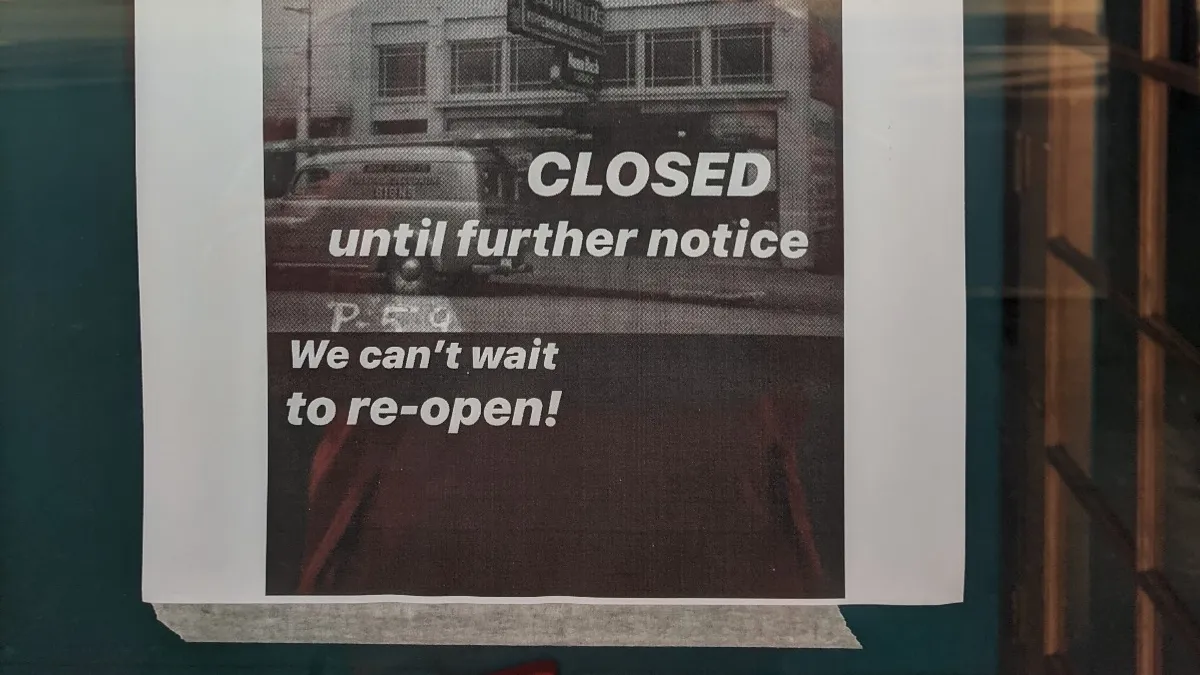Dive Brief:
- The U.S. may reach more than 30% unemployment for the second quarter of 2020 due to the slowdown in economic activity caused by the COVID-19 pandemic, according to an analysis published March 24 by the Federal Reserve Bank of St. Louis.
- That estimate translates to a total of some 52.81 million unemployed persons in the second quarter, the Fed said, with about 47 million workers being laid off during that time period. The Fed noted a separate estimate from one of its regional economists, who estimated that 66.8 million people are employed in occupations with a high risk of layoffs, including sales, production and food preparation and services, among others.
- The Fed's analysis has some caveats, it said. The calculations assume the labor force is constant, and they exclude the fact that some recently unemployed workers may not seek employment. Businesses may also choose to send workers home with pay rather than lay them off, the Fed said. The analysis also did not account for the impact of measures like payroll support for small businesses or changes to unemployment insurance, both of which were addressed in a recently passed federal law.
Dive Insight:
Millions of jobs are at risk of layoffs due to the impact of the novel coronavirus, and that figure grows as states and localities announce stricter public-health measures. A March 18 estimate from outplacement firm Challenger, Gray & Christmas found that more than 9 million jobs in the leisure and hospitality industries alone were impacted by restaurant and bar closures across the U.S. The firm also counted more than 9,000 job cuts, most of them concentrated in the entertainment and leisure industries.
The situation is such that, in some cases, local governments have relaxed laws around conducting layoffs. In California, Gov. Gavin Newsome suspended last week the usual notice requirements of the state's Cal-WARN Act via executive order. But employers covered by that order are still required to provide required written notices, provide as much notice as possible and explain why the notice period was shortened.
U.S. businesses and workers may benefit from the recently enacted Coronavirus Aid, Relief, and Economic Security Act (CARES Act), which provides small businesses and nonprofits with fewer than 500 employees access to partially forgivable loans. The law also includes relief for individuals in the form of both direct cash payments as well as expanded unemployment benefits.
Yet, it wasn't long after the CARES Act passed that some critics wondered if the $2 trillion package would be enough to offset slowing economic growth. Though the law makes "substantial and welcome changes" to both unemployment insurance and small business payroll support programs, it provides time-based aid rather than aid that would continue to flow as economic conditions warrant, according to officials with the Economic Progress Institute, a progressive think tank.
Even before the COVID-19 pandemic, economists noted that not all measures of unemployment benefited from a relatively healthy economy. Long-term unemployment remained at levels seen before the onset of the Great Recession, but was still higher than in 2000, according to an Indeed economist.
And while unemployment is expected to reach record levels, employers classified as essential businesses during the pandemic are hiring at a frantic pace to keep up with demand. For example, Walmart recently announced that it shortened its hiring window for store associates so that it can hire those workers in as little as 24 hours.














